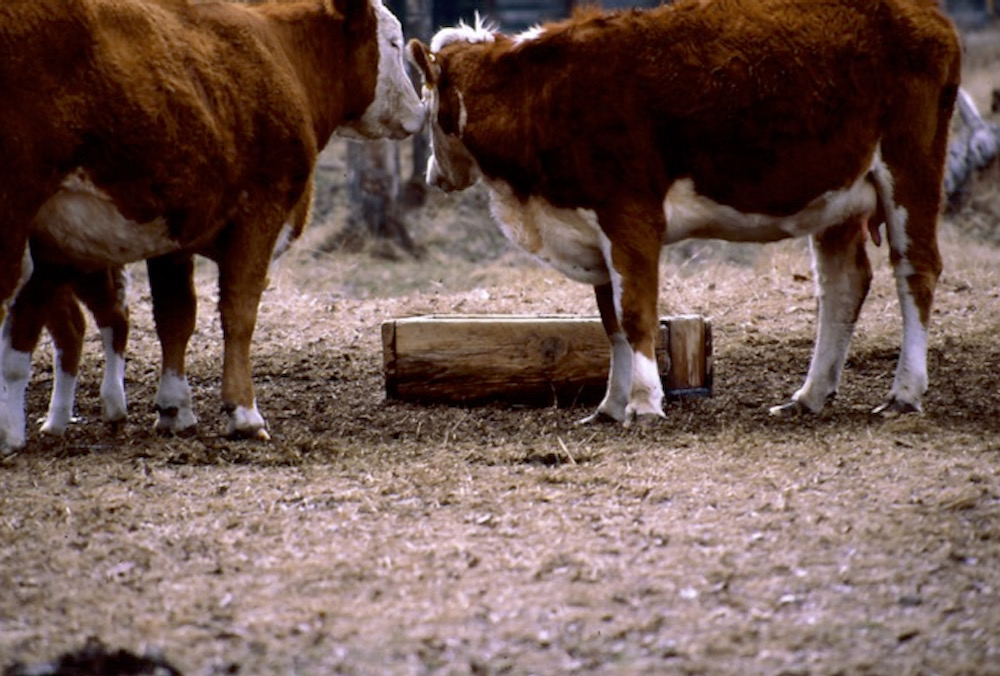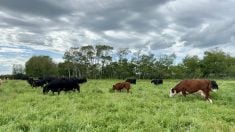As a nutritionist, one of my tasks is to develop feeding programs that handle a variety of cattle types. In most cases, producers will have performance expectations for the cattle they feed. In the case of backgrounding cattle, this might involve targeting a specific average daily gain for a defined period. Finishing cattle usually involves reaching a specific slaughter weight by a defined marketing date. Achieving these goals is a function of several factors including the nature of the ration, animal type, impact of the environment, as well as feeding/bunk management. With all these factors coming into play, one might wonder whether it is possible to accurately predict cattle performance. With this article, I want to introduce you to one of the tools that nutritionists rely on when attempting this task.
Let’s start with the obvious. Experienced — some might say “long in the tooth” — nutritionists have a pretty good feel as to how certain cattle types perform on a given ration. However, in today’s competitive feeding environment, having a good feel for performance is not always sufficient, particularly when marketing date relies on performance expectations. To improve on accuracy, many nutritionists rely on computer models that incorporate the results of a vast body of published research to predict performance.
In North America, examples of such models include those developed and released with the 1996 to 2000 and 2016 Nutrient Requirements of Beef Cattle publications. The popular Alberta Agriculture Cowbytes program is based in part on the 1996 to 2000 NRC model. Animal scientists at Cornell University have been instrumental in this area, developing models for beef and dairy cattle.
Read Also

Finding greater value through controlled creep feeding of beef calves
Gerard Roney, founder of Advantage Feeders in Australia, spoke at Ag in Motion 2025 about using controlled creep feeding to develop a calf’s rumen, allowing for better uptake of energy and protein at a younger age, along with other beneficial applications of creep feeding.
While differing in complexity, most models have a similar working structure. First and foremost, they incorporate research-based equations and specific animal and environmental inputs to predict the nutrient requirements of the cattle in question, either in absolute amounts or as a percentage of the dry matter. For example, when using Cowbytes to develop a ration for weaned calves, one can input age, weight, breed, gender, hide thickness, implant and ionophore status, and the mature/slaughter weight of the cattle being fed. As well, environmental factors such as temperature, wind speed and mud depth can be inputted at the user’s discretion. In the case of 500-pound steer calves with an expected gain of two pounds a day, with the above inputs, this model will provide estimates of the pounds of total digestible nutrients required per day or in the case of net energy, the mega calories required per day for maintenance and gain. Similarly, the model will provide estimates of protein, mineral and vitamin requirements as well as ration costs. By changing inputs such as weight and expected performance, it is possible to model the nutrient requirements for this group of calves from weaning through to slaughter under varying environmental conditions. Depending on model complexity, estimates of metabolizable protein and amino acid requirements are generated, as well as predictions of methane production and manure excretion.
In addition to predicting nutrient requirements, an important component of these models is the prediction of dry matter intake (DMI). This is accomplished using equations that incorporate inputs such as the animal’s shrunk body weight and the net energy for maintenance concentration of the diet. Adjustments can be made for implant and feed additive usage, body condition score as well as varying environmental conditions. Accurate prediction of dry matter intake is important for predicting performance as well as for comparing actual to predicted intakes. While most models predict DMI, it is also necessary to input actual or expected intakes of each feed ingredient to determine nutrient supply, as discussed below.
A third component common to these models is a feed library that provides typical values for the nutrient content of common feeds. When available, actual feed test results can replace book values. Novel and/or local feeds and their nutrient content can be added to the library at the user’s discretion.
With the proper animal and environmental inputs, these model components work in concert to first determine essential nutrient requirements for the animal in question. Next, the supply of essential nutrients — particularly that of energy and protein — is determined using the inputted dry matter intake of each available feed and its associated nutrient content. Mechanistic models such as that from Cornell predict nutrient supply based on rumen energy and protein dynamics of ingested feed and the projected flow of nutrients to the lower gut. In either case, for a given animal and level of performance, the result is a set of predictions, one for the requirement of a given nutrient (i.e. energy), and one for nutrient supply. If the balance is negative, predicted performance will be less than expected. If energy supply equals the requirement, predicted and expected performance values should match and if supply exceeds the requirement, predicted performance will be greater than expected.
Modelling cattle performance has come a long way, thanks to the efforts of research scientists in Canada, the U.S. and many other countries. However, it is not a perfect science. Further research is required to improve the accuracy of the prediction equations. For now, it is important to understand that these models allow one to predict performance; they do not provide an absolute guarantee of performance.
















